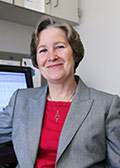More than one-third of adults in Kentucky reported that they don’t get enough sleep. And, up to 50 percent of children in the United States will experience a sleeping problem, according to the Centers for Disease Control and Prevention.
In addition to impacting a person’s mood and ability to function normally day-to-day, a consistent lack of sleep has been linked to a number of chronic illnesses. Therefore, it’s important to treat any problems with sleeping right away to protect your overall health and wellness.
Common sleep disorders
Sleep disorders involve problems with the quality, timing and amount of sleep a person receives. The most common sleep disorders include:
- Sleep apnea
- Insufficient sleep
- Insomnia
- Restless leg syndrome
Symptoms of these sleep disorders include snoring and frequent awakening, daytime sleepiness or fatigue, difficulty falling asleep, and increased movement during sleep, respectively.
Many health problems are associated with sleep disorders in adults and children. Researchers have found that those suffering from sleep disorders are at an increased risk of developing cardiovascular diseases such as hypertension and coronary heart disease. They are also at a higher risk for diabetes, obesity and depression.
Sleep disorders in children
In children, sleep disorders have been shown to intensify irritability, behavioral problems, learning disabilities and poor academic performance. Shorter sleep durations can cause harmful metabolic changes, which are associated with excess body weight in children.
Diagnosing and treating sleep disorders in children right away is especially important, as sleep is crucial to a child’s mental and physical development.
Sleep disorder diagnoses and treatment
To diagnose a sleep disorder, a physician may want to observe a patient overnight and monitor for symptoms. In some cases, a diagnosis can be made simply by examining a patient’s medical history and physical health.
Most sleep disorders can be treated with lifestyle changes and other forms of therapy.
A doctor may recommend a device to keep the airway open while sleeping called a CPAP, cognitive behavioral therapy or positional therapy, as well as lifestyle changes like weight loss, wearing an oral or dental appliance, or a variety of other treatments depending on the type and severity of the sleep disorder. In very severe cases, surgery may be necessary to correct the disorder.
In people of all ages, having a consistent sleep schedule and making changes to your sleep habits can improve your overall sleep health. This can include sleeping in a dark, relaxing environment, abstaining from electronic devices before bedtime, and avoiding large meals and caffeine prior to sleeping.
Sleep is a basic human necessity that is crucial to health and wellness. If you or a loved one are experiencing issues falling asleep or staying asleep, visit CHI Saint Joseph Health – Sleep Care.





